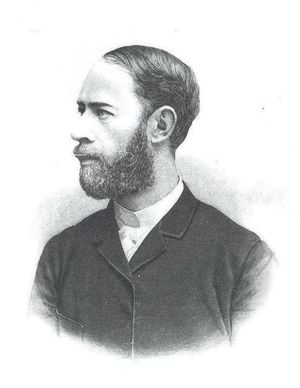Electromagnetic Waves: Difference between revisions
From ETHW
(New page: '''This article is a stub. Please help expand the article by using the edit tab.''' thumb|center|Heinrich Hertz In 1888, [[Heinrich Hertz (1857-1894)|Heinrich ...) |
No edit summary |
||
| (2 intermediate revisions by 2 users not shown) | |||
| Line 1: | Line 1: | ||
'''This article is a stub. Please help expand the article by using the edit tab.''' [[Image:Hertz Portrait.JPG|thumb|center|Heinrich Hertz]] In 1888, [[Heinrich Hertz (1857-1894)|Heinrich Hertz]], in Karlsruhe, published his experimental validations of [[Maxwell's Equations|Maxwell's equations]] and forced a conceptual revolution in European theoretical physicists by showing that electromagnetic effects propagate at a finite speed. He also discovered the existence of [[Radio Waves|radio waves]]. | '''This article is a stub. Please help expand the article by using the edit tab.''' [[Image:Hertz Portrait.JPG|thumb|center|Heinrich Hertz]] In 1888, [[Heinrich Hertz (1857-1894)|Heinrich Hertz]], in Karlsruhe, published his experimental validations of [[Maxwell's Equations|Maxwell's equations]] and forced a conceptual revolution in European theoretical physicists by showing that electromagnetic effects propagate at a finite speed. He also discovered the existence of [[Radio Waves|radio waves]]. | ||
[[Category:Fields,_waves_&_electromagnetics]] | |||
[[Category:Electromagnetics]] | |||
[[Category:Electromagnetic_fields]] | |||
Revision as of 16:32, 12 January 2012
This article is a stub. Please help expand the article by using the edit tab.
In 1888, Heinrich Hertz, in Karlsruhe, published his experimental validations of Maxwell's equations and forced a conceptual revolution in European theoretical physicists by showing that electromagnetic effects propagate at a finite speed. He also discovered the existence of radio waves.
